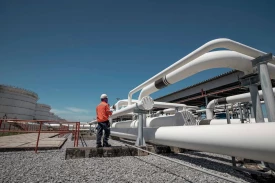January 22, 2024
If necessity is the mother of invention, existential crises tend to be the great accelerators. The urgent need to address climate change, collapsing food systems, the next pandemic, and other global challenges is mobilizing investors, companies, researchers, and governments to speed the development of a raft of once-futuristic technologies with far-reaching business implications.
ChatGPT’s arrival in November 2022 reminded us of the transformative power of a breakthrough technology. Academics and tech companies had been experimenting with generative AI for years. Then, suddenly, it was at everyone’s front door, disrupting their business. Two years earlier, we were amazed by the seemingly miraculous development of COVID 19 vaccines in nine months using mRNA, a molecular biology technology conceived in the 1960s.
What other game-changing technologies that have gestated for years in labs and pilot plants may be approaching their “ChatGPT moment”—the point when they become commercially viable, scale up, and redefine industries? We asked BCG experts why they believe five—synthetic biology, quantum computing, fusion energy, direct air capture, and CO2 to X—are nearing inflection points in the next one or two decades.
The Technologies at a Glance



















